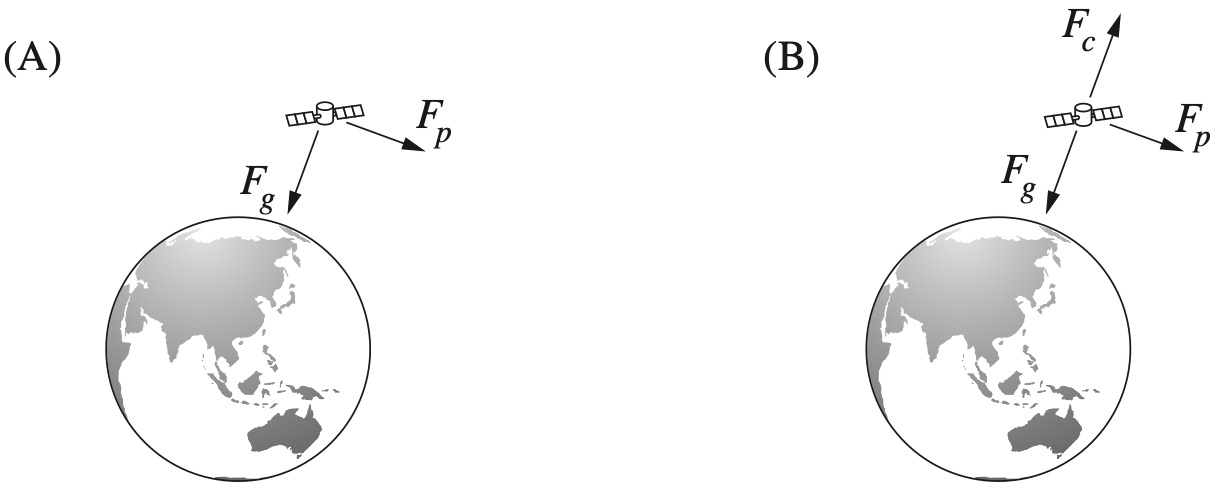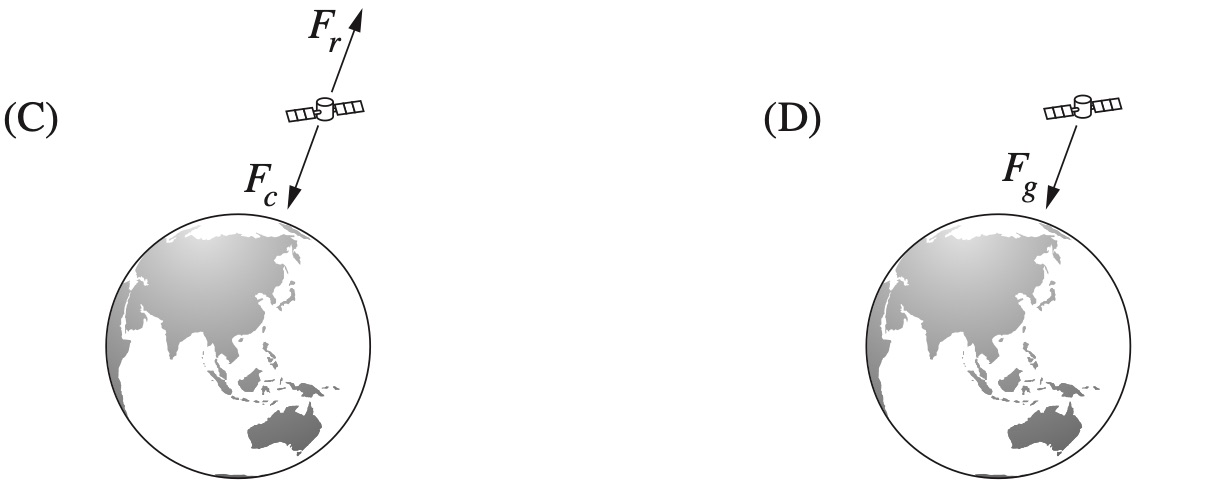An object sits on the floor of a hollow cylinder rotating around an axis, as shown. The cylinder's rotation causes the object to undergo uniform circular motion. Explain the effect on all of the forces acting on the object if the period of the cylinder's rotation is halved. Ignore the effects of friction. (4 marks) --- 8 WORK AREA LINES (style=lined) ---
PHYSICS, M5 2019 VCE 8
A 250 g toy car performs a loop in the apparatus shown in the diagram below. The car starts from rest at point \(\text{A}\) and travels along the track without any air resistance or retarding frictional forces. The radius of the car's path in the loop is 0.20 m. When the car reaches point \(\text{B}\) it is travelling at a speed of 3.0 m s\(^{-1}\). --- 6 WORK AREA LINES (style=lined) --- --- 6 WORK AREA LINES (style=lined) --- --- 5 WORK AREA LINES (style=lined) ---
PHYSICS, M5 2020 VCE 8
The diagram below shows a small ball of mass 1.8 kg travelling in a horizontal circular path at a constant speed while suspended from the ceiling by a 0.75 m long string.
- Use labelled arrows on the diagram above to indicate the two physical forces acting on the ball. (2 marks)
--- 0 WORK AREA LINES (style=blank) ---
- Calculate the speed of the ball. Show your working. (4 marks)
--- 8 WORK AREA LINES (style=lined) ---
PHYSICS, M5 2023 HSC 32
A horizontal disc rotates at 3 revolutions per second around its centre, with the top of the disc at ground level.
At 2 m from the centre of the disc, a ball is held in place at ground level on the top of the disc by a spring-loaded projectile launcher. At position \(X\), the launcher fires the ball vertically upward with a velocity of 5.72 m s\(^{-1}\).
Calculate the ball's position relative to the launcher's new position, at the instant the ball hits the ground. (7 marks)
--- 14 WORK AREA LINES (style=lined) ---
PHYSICS, M5 2015 HSC 26
Consider the following two models used to calculate the work done when a 300 kg satellite is taken from Earth's surface to an altitude of 200 km.
You may assume that the calculations are correct.
- What assumptions are made about Earth's gravitational field in models `X` and `Y` that lead to the different results shown? (2 marks)
--- 5 WORK AREA LINES (style=lined) ---
- Why do models `X` and `Y` produce results that, although different, are close in value? (1 mark)
--- 3 WORK AREA LINES (style=lined) ---
- Calculate the orbital velocity of the satellite in a circular orbit at the altitude of 200 km. (3 marks)
--- 5 WORK AREA LINES (style=lined) ---
PHYSICS, M5 2015 HSC 11 MC
Which of the following diagrams correctly represents the force(s) acting on a satellite in a stable circular orbit around Earth?


PHYSICS, M5 2019 HSC 35
The apparatus shown is attached horizontally to the roof inside a stationary car. The plane of the protractor is perpendicular to the sides of the car.
The car was then driven at a constant speed `(v)`, on a horizontal surface, causing the string to swing to the right and remain at a constant angle `(theta)` measured with respect to the vertical.
Describe how the apparatus can be used to determine features of the car's motion. In your answer, derive an expression that relates a feature of the car's motion to the angle `theta`. (4 marks)
--- 10 WORK AREA LINES (style=lined) ---
